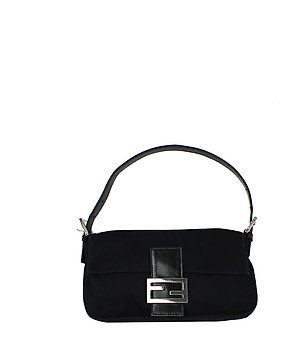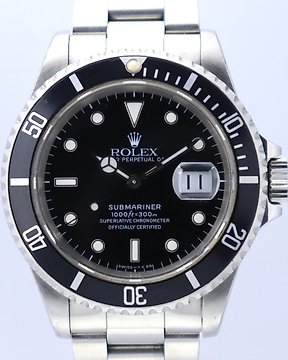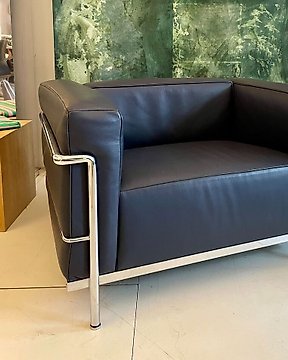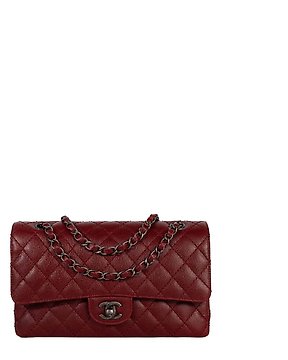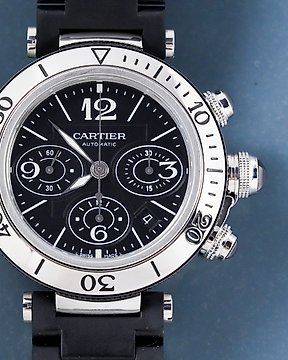Received my parcel in great condition. Very well taken care of. Thank you!
View translationAncient Roman, Empire Basalt Ancient Roman Basalt Head of a Youth - With Spanish Export License - 22.5 cm
No. 85166133
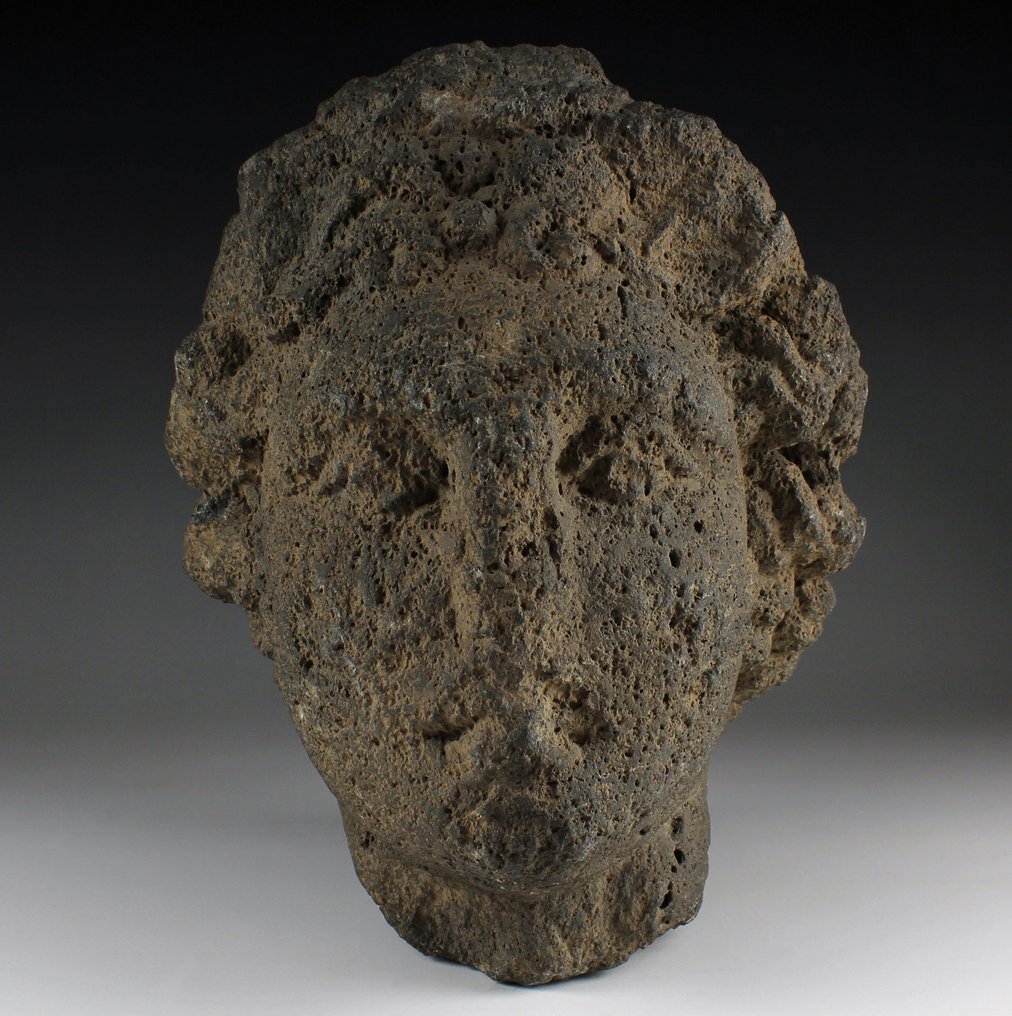
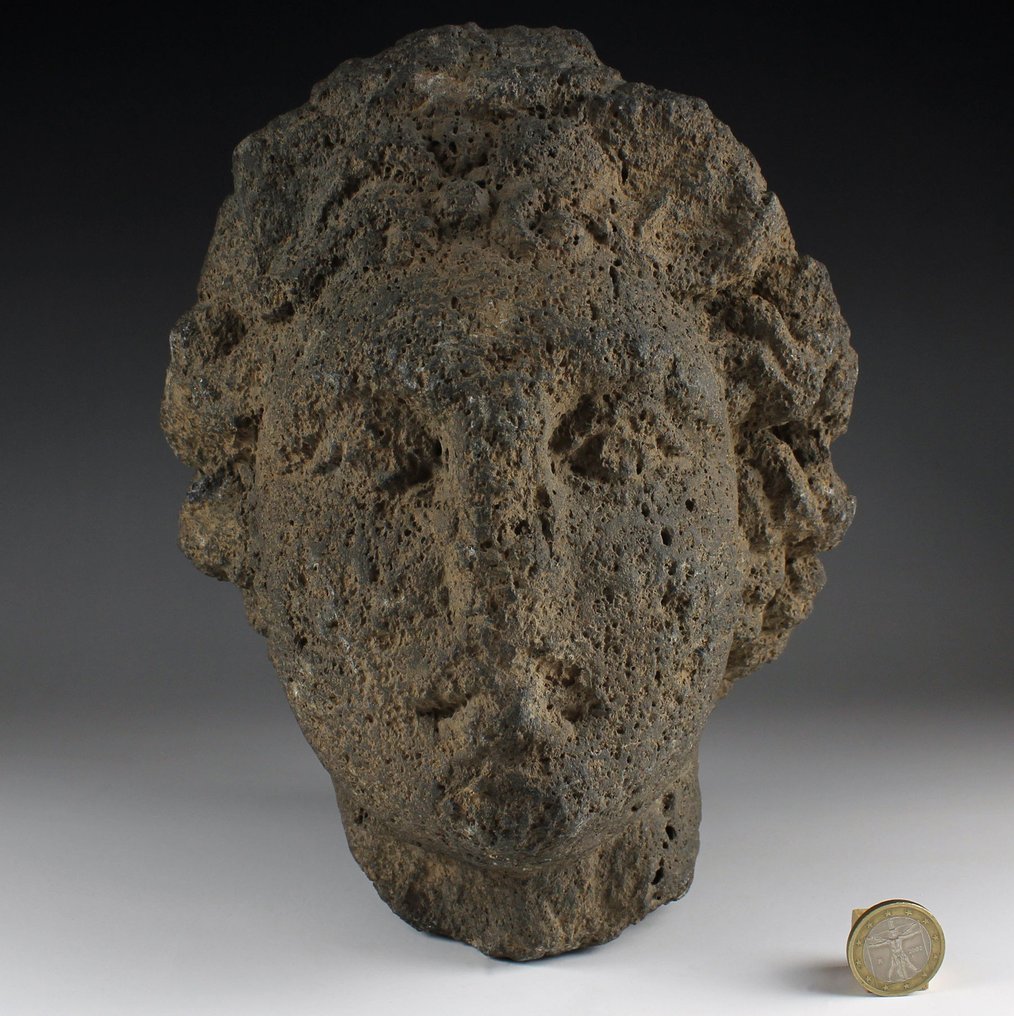
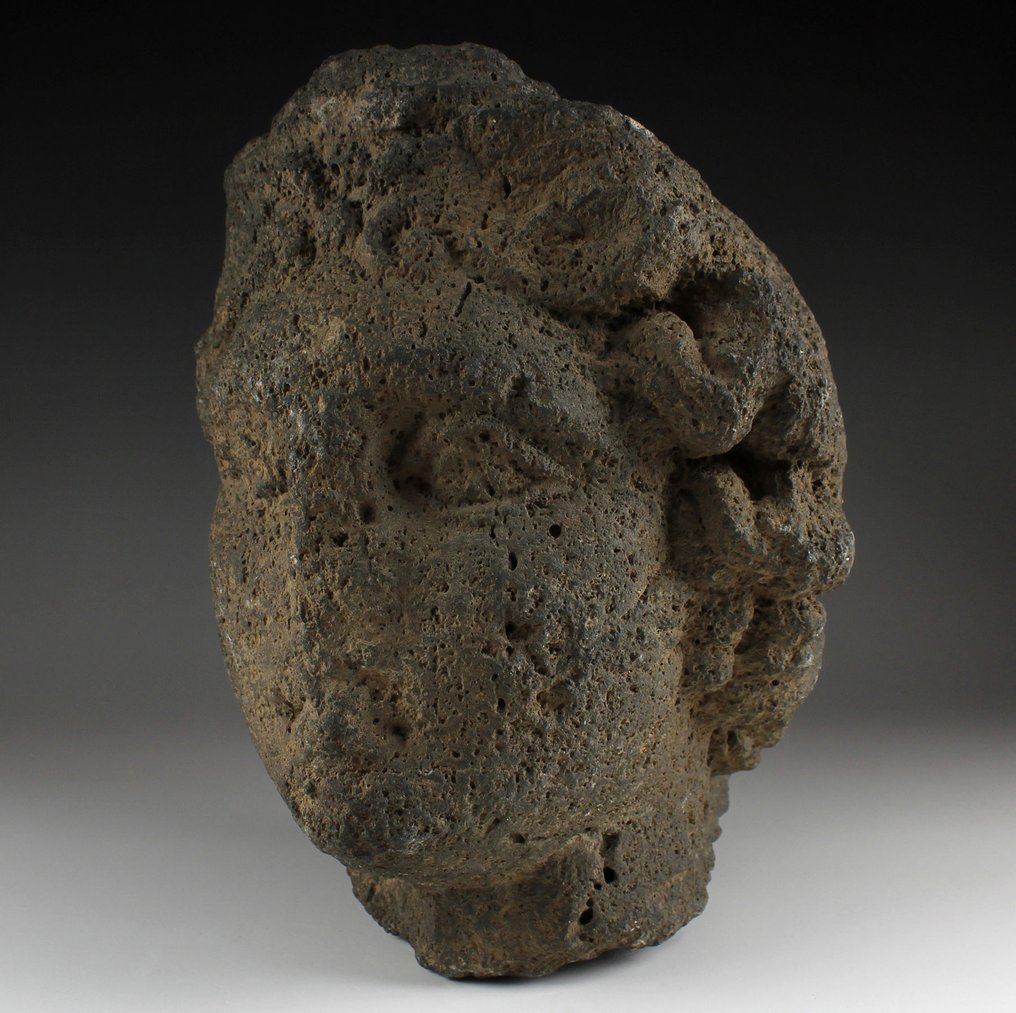
A roman grey basalt head of a young, depicted with wavy hair, almond-shaped eyes and lips pursed in a serious gesture.
Dimensions: 225 mm x 175 mm x 160 mm, Life-size
Condition: Surface wear and losses as shown in pictures. Good overall condition.
Provenance: Acquired at a spanish antiquarian. Ex Swiss private collection, acquired in 1990’s
Roman portraiture was one of the most significant periods in the development of portrait art. Originating from ancient Rome, it continued for almost five centuries. Roman portraiture is characterised by unusual realism and the desire to convey images of nature in the high quality style often seen in ancient Roman art. Some busts even seem to show clinical signs. Several images and statues made in marble and bronze have survived in small numbers. Roman funerary art includes many portraits such as married couple funerary reliefs, which were most often made for wealthy freedmen rather than the patrician elite.
Portrait sculpture from the Republican era tends to be somewhat more modest, realistic, and natural compared to early Imperial works. A typical work might be one like the standing figure “A Roman Patrician with Busts of His Ancestors” (c. 30 B.C.).
By the imperial age, though they were often realistic depictions of human anatomy, portrait sculpture of Roman emperors were often used for propaganda purposes and included ideological messages in the pose, accoutrements, or costume of the figure. Since most emperors from Augustus on were deified, some images are somewhat idealized. The Romans also depicted warriors and heroic adventures, in the spirit of the Greeks who came before them.
Roman portraiture of the Imperial period includes works created throughout the provinces, often combining Greek, Roman, and local traditions, as with the Fayum mummy portraits.
Hellenistic Greek style and leadership expectations carried over into Roman leadership portraiture. One significant example is the Severan Period marble portrait of the emperor Caracalla. Nearly all representations of Caracalla reflect his military prowess through his frighteningly aggressive expression. Caracalla borrowed the precedent Alexander set; the piercing gaze. His arresting confidence exudes from his features to show that he is not a man to be trifled with. The intense sculptural execution of this piece in particular reflects a shift toward more geometric renderings of the human face to better convey messages to the public, often strong implications of power and authority to keep peace in the Roman Empire. Emperors coming after Caracalla saw the respect he commanded of his subordinate governing party as well as the Roman population as a whole. Seeing his success as a ruler, subsequent emperors sought to have portraits similar to Caracalla’s to suggest that they were on the same level as him, both in terms of military tenacity and authoritarian control. This facilitated more and more geometric, less idealized figural representations of leaders to constantly emphasize the ruler’s strength and image.
This geometric style proved to be useful to the Roman Tetrarchs that divided rule of the empire among themselves after the reign of the emperors. The geometric style of the Portrait of the Four Tetrarchs is not realistic, but the style applied to all four figures sent a message of steadiness and agreements between the four rules, reassuring Roman citizens while simultaneously sending an unmistakable message of power and authority reminiscent of the previous emperors. Presenting variance in the appearance of the tetrarchs may have contributed to viewers favoring one ruler over the others. Instead, the Tetrarchy chose to show themselves as visually synonymous in this particular piece to show their ontological equality and show the unity and strength of the empire through this representation of all four together. Using near-identical geometric forms to represent their likenesses was the easiest way to show their equality and common will. The abstraction of human form made for a clearer understanding of the expectations Roman Tetrarchs had for their subjects and how Roman citizens expected the Tetrarchs to rule.
- The piece includes authenticity certificate. The piece includes
Spanish Export License ( Passport for European Union)
- If the piece goes outside the European Union a new export license will
be requested by us, This process can take beteen 1 and 2 months.
According to Spanish legislation, items sent outside the European Union
are subject to export taxes and will be added to the invoice, at the
buyer's expense. These export fees are fixed on the final auction price
and the tax rate is not applied directly on the total value of the item
to be exported, but rather the different percentages by sections are
applied to it:
- Up to 6,000 euros: 5%./ From 6.001 to 60.000 euros: 10%.
- Shipped with Insurance.
#JuliusCaesar
Seller's Story
A roman grey basalt head of a young, depicted with wavy hair, almond-shaped eyes and lips pursed in a serious gesture.
Dimensions: 225 mm x 175 mm x 160 mm, Life-size
Condition: Surface wear and losses as shown in pictures. Good overall condition.
Provenance: Acquired at a spanish antiquarian. Ex Swiss private collection, acquired in 1990’s
Roman portraiture was one of the most significant periods in the development of portrait art. Originating from ancient Rome, it continued for almost five centuries. Roman portraiture is characterised by unusual realism and the desire to convey images of nature in the high quality style often seen in ancient Roman art. Some busts even seem to show clinical signs. Several images and statues made in marble and bronze have survived in small numbers. Roman funerary art includes many portraits such as married couple funerary reliefs, which were most often made for wealthy freedmen rather than the patrician elite.
Portrait sculpture from the Republican era tends to be somewhat more modest, realistic, and natural compared to early Imperial works. A typical work might be one like the standing figure “A Roman Patrician with Busts of His Ancestors” (c. 30 B.C.).
By the imperial age, though they were often realistic depictions of human anatomy, portrait sculpture of Roman emperors were often used for propaganda purposes and included ideological messages in the pose, accoutrements, or costume of the figure. Since most emperors from Augustus on were deified, some images are somewhat idealized. The Romans also depicted warriors and heroic adventures, in the spirit of the Greeks who came before them.
Roman portraiture of the Imperial period includes works created throughout the provinces, often combining Greek, Roman, and local traditions, as with the Fayum mummy portraits.
Hellenistic Greek style and leadership expectations carried over into Roman leadership portraiture. One significant example is the Severan Period marble portrait of the emperor Caracalla. Nearly all representations of Caracalla reflect his military prowess through his frighteningly aggressive expression. Caracalla borrowed the precedent Alexander set; the piercing gaze. His arresting confidence exudes from his features to show that he is not a man to be trifled with. The intense sculptural execution of this piece in particular reflects a shift toward more geometric renderings of the human face to better convey messages to the public, often strong implications of power and authority to keep peace in the Roman Empire. Emperors coming after Caracalla saw the respect he commanded of his subordinate governing party as well as the Roman population as a whole. Seeing his success as a ruler, subsequent emperors sought to have portraits similar to Caracalla’s to suggest that they were on the same level as him, both in terms of military tenacity and authoritarian control. This facilitated more and more geometric, less idealized figural representations of leaders to constantly emphasize the ruler’s strength and image.
This geometric style proved to be useful to the Roman Tetrarchs that divided rule of the empire among themselves after the reign of the emperors. The geometric style of the Portrait of the Four Tetrarchs is not realistic, but the style applied to all four figures sent a message of steadiness and agreements between the four rules, reassuring Roman citizens while simultaneously sending an unmistakable message of power and authority reminiscent of the previous emperors. Presenting variance in the appearance of the tetrarchs may have contributed to viewers favoring one ruler over the others. Instead, the Tetrarchy chose to show themselves as visually synonymous in this particular piece to show their ontological equality and show the unity and strength of the empire through this representation of all four together. Using near-identical geometric forms to represent their likenesses was the easiest way to show their equality and common will. The abstraction of human form made for a clearer understanding of the expectations Roman Tetrarchs had for their subjects and how Roman citizens expected the Tetrarchs to rule.
- The piece includes authenticity certificate. The piece includes
Spanish Export License ( Passport for European Union)
- If the piece goes outside the European Union a new export license will
be requested by us, This process can take beteen 1 and 2 months.
According to Spanish legislation, items sent outside the European Union
are subject to export taxes and will be added to the invoice, at the
buyer's expense. These export fees are fixed on the final auction price
and the tax rate is not applied directly on the total value of the item
to be exported, but rather the different percentages by sections are
applied to it:
- Up to 6,000 euros: 5%./ From 6.001 to 60.000 euros: 10%.
- Shipped with Insurance.
#JuliusCaesar
Seller's Story
- 2
- 1
- 0
Très bel objet, livré dans l'appartement, parfait
View translationA embalagem era desadequada porque não garantiu a preservação da peça. Verficou-se a quebra de uma parte da peça.
View translation- 2
- 1
- 0
Received my parcel in great condition. Very well taken care of. Thank you!
View translation
